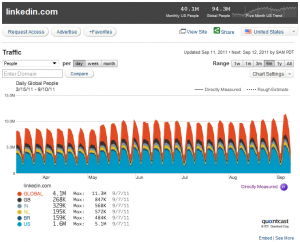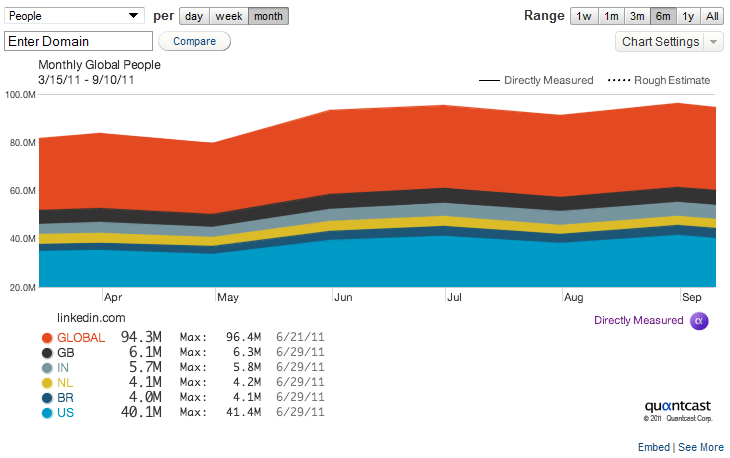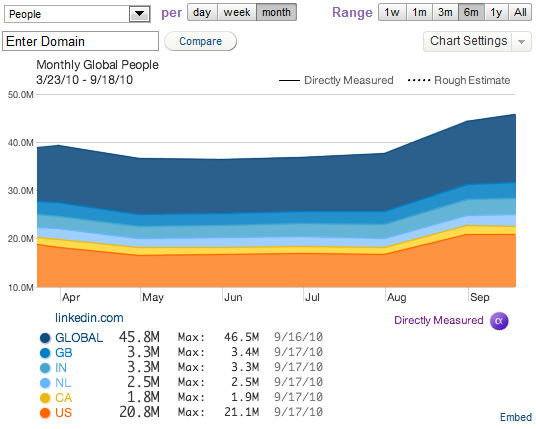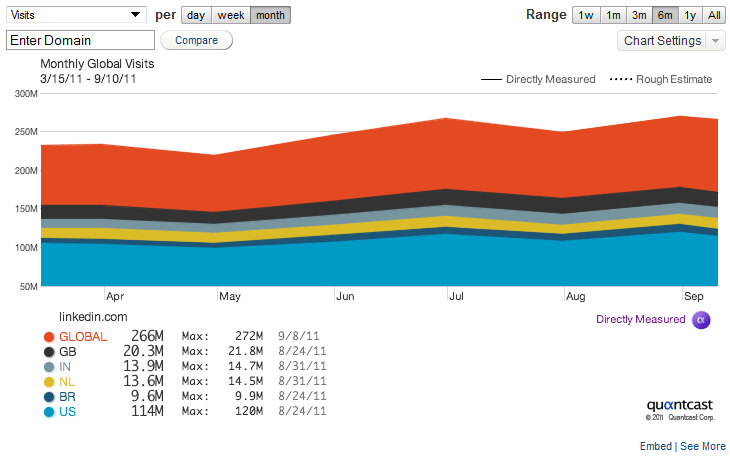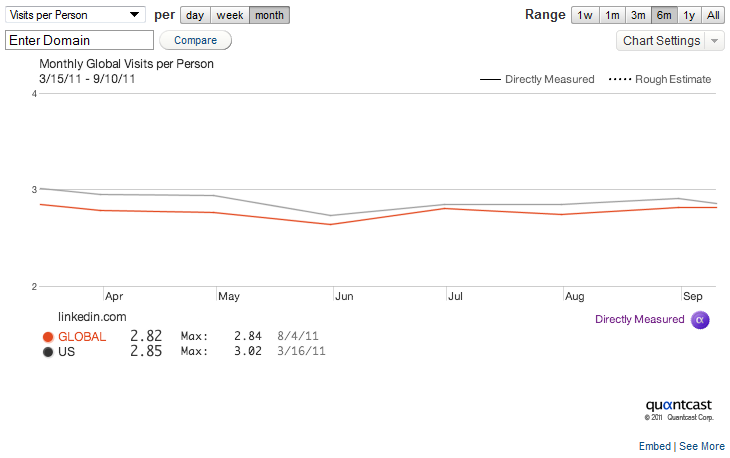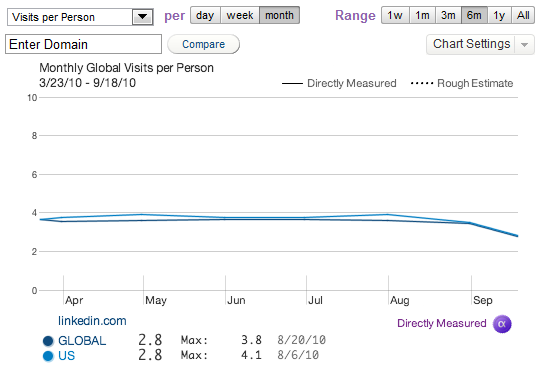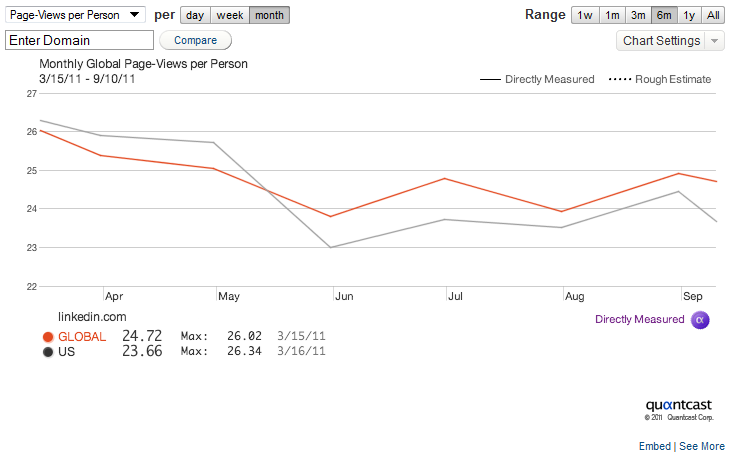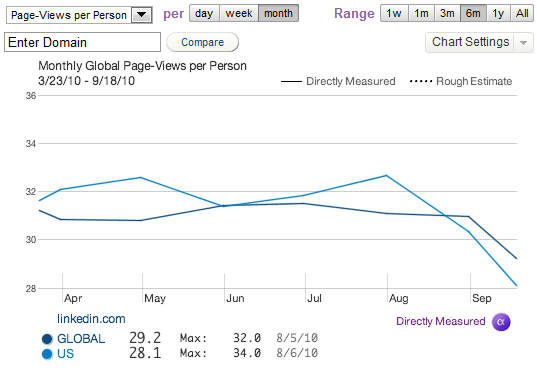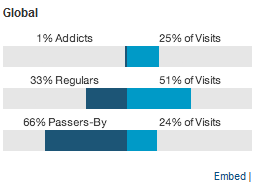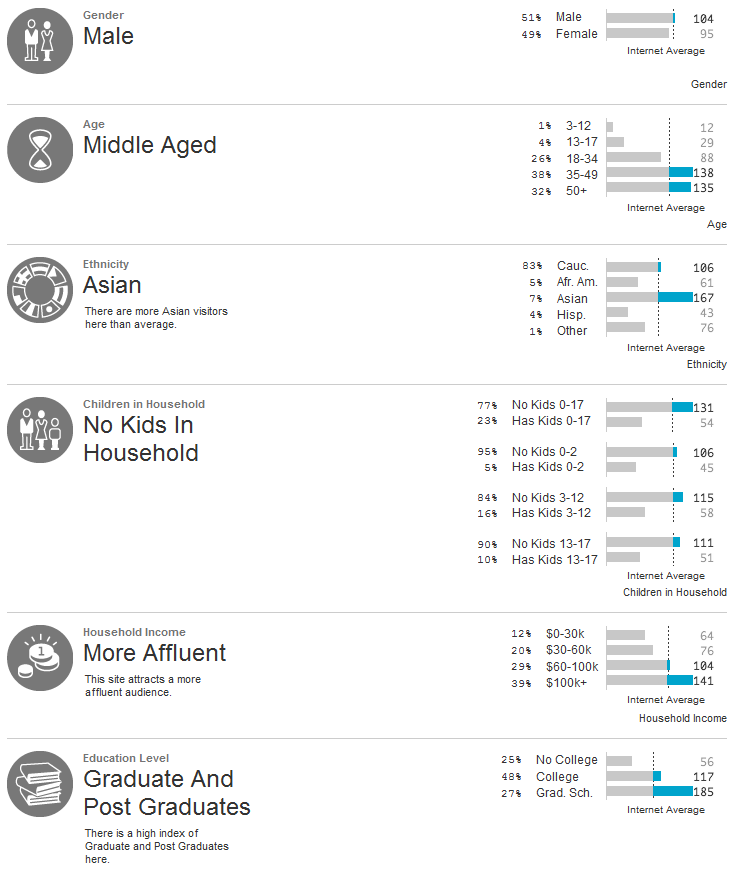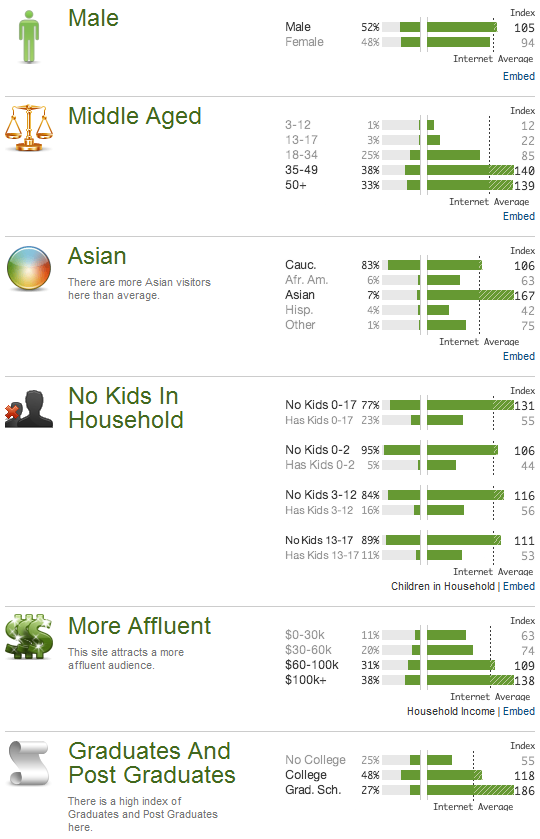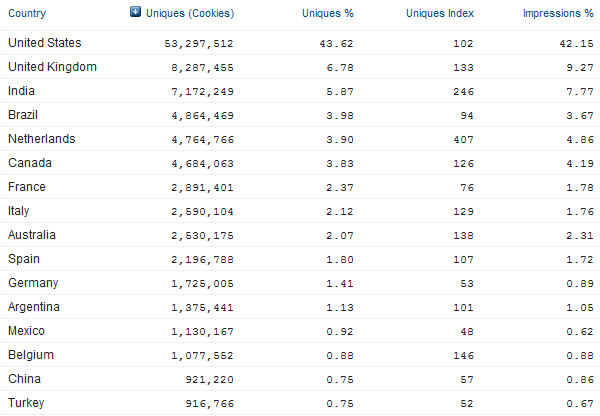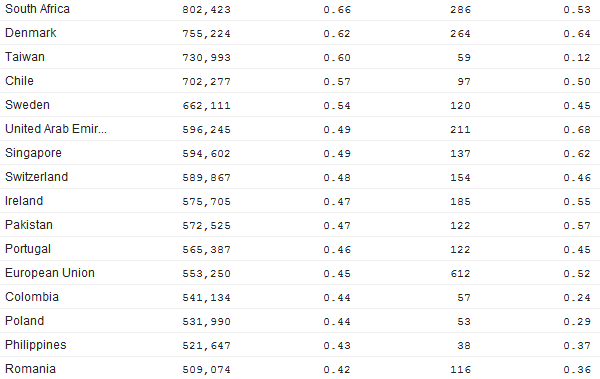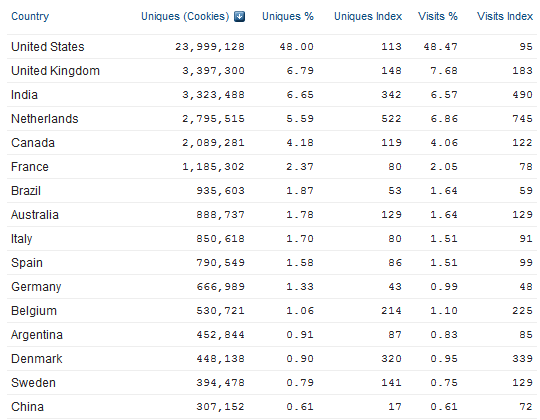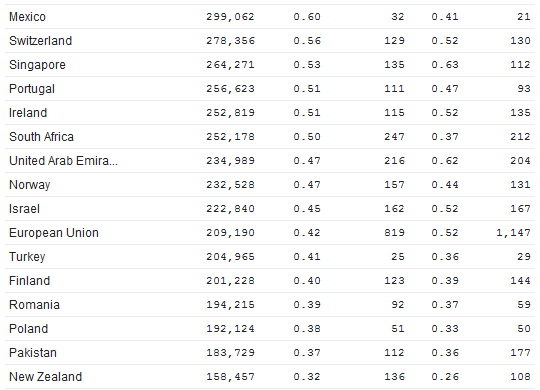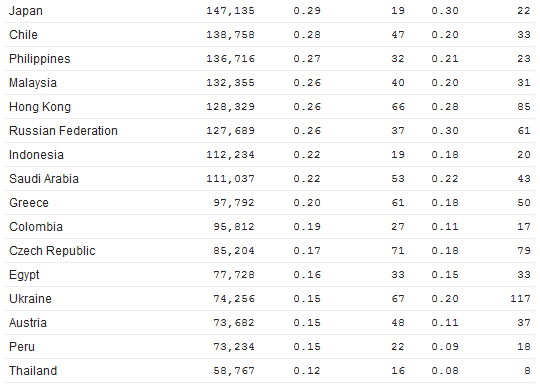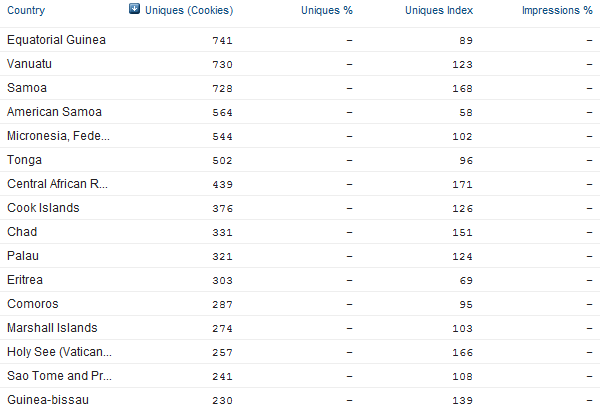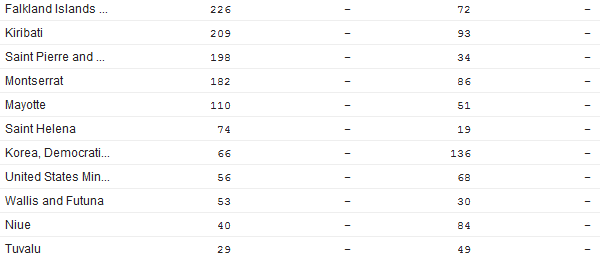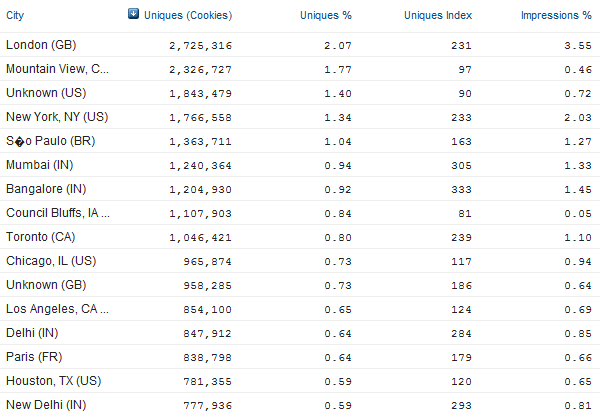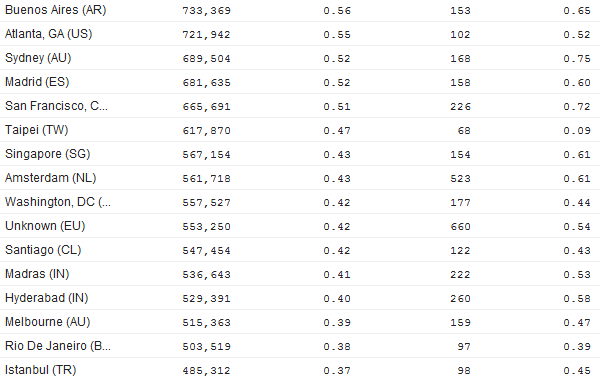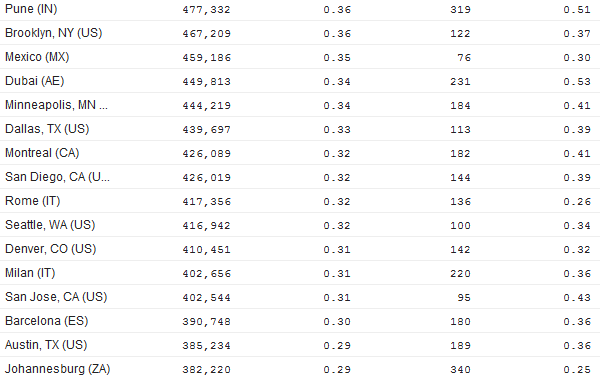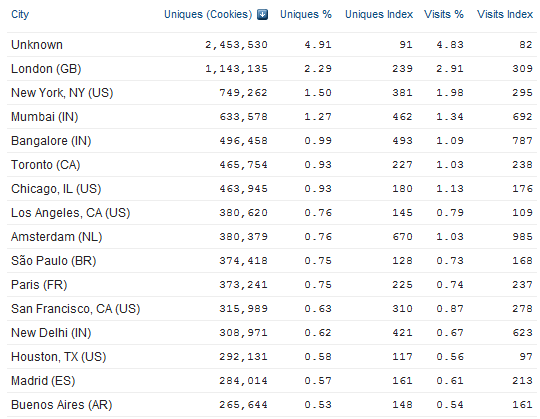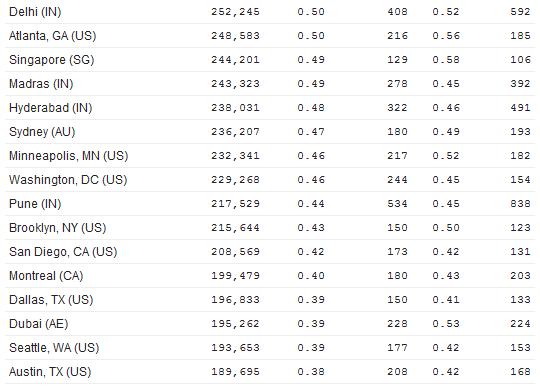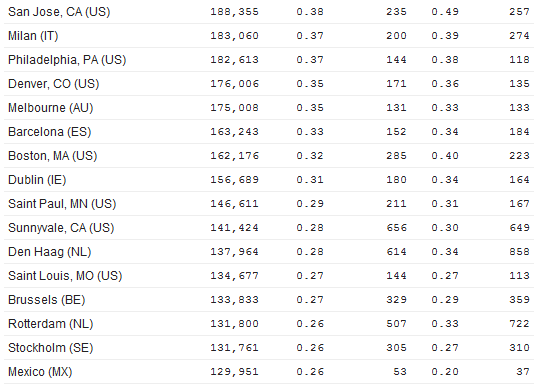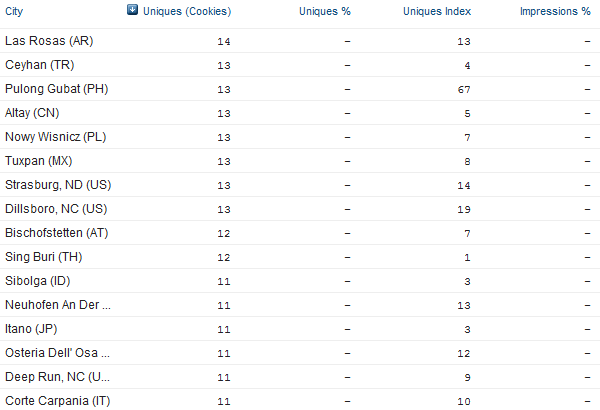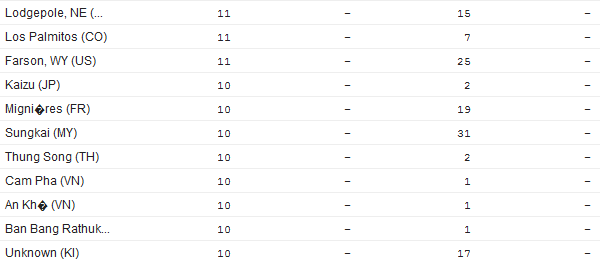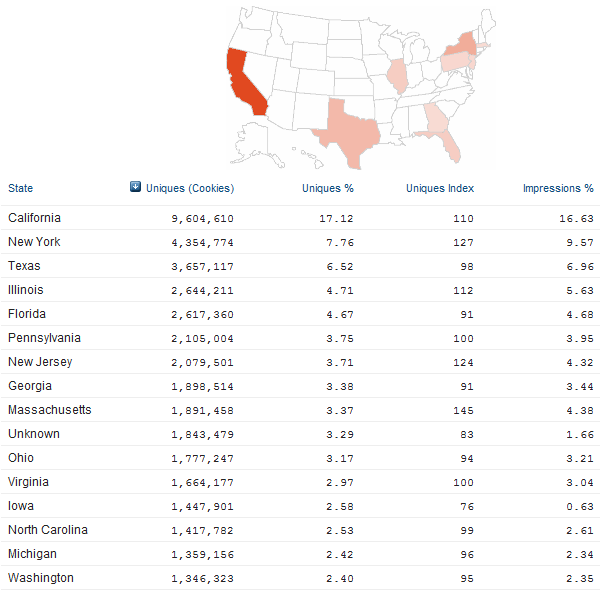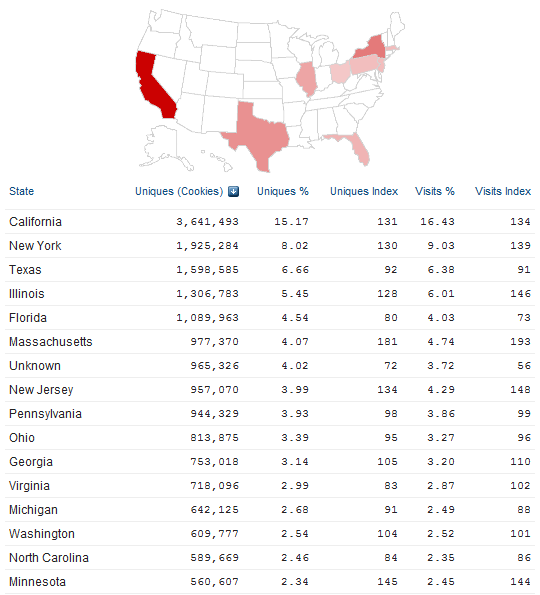Would you like to know more about LinkedIn’s user demographics, as well as LinkedIn’s visitor statistics broken down by country, city, and state?
If so, you’ve come to the right place!
After patiently waiting for a whole year since my last post on LinkedIn statistics, I’m excited to bring you LinkedIn’s latest user demographics and visitor statistics for 2011.
In this post, I will compare the data I presented in September 2010 to the data I just pulled from Quantcast.
Quantcast is used by 9 of the top 10 media agencies because they quite accurately quantify Internet audiences.
While some sites are not directly measured and only have estimated data at this time (such as Facebook and Twitter), LinkedIn is fully “quantified.”
In other words, Quantcast directly measures LinkedIn’s visitors – which gives us great information and some very interesting insights!
Read on to see the following LinkedIn data:
- Global monthly visitors
- Global monthly visits
- Visits per person
- Pageviews per person
- Visit frequency
- Business activity
- User demographics (gender, age, ethnicity, income, education level)
- Monthly visitors by country
- Monthly visitors by city (global)
- Monthly visitors by state (U.S.)
LinkedIn Global Monthly Visitors
This chart shows the monthly global unique visitors to LinkedIn for the past 6 months.
Note that Quantcast claims they are the only measurement service that tells you the difference between cookies and people, which is important because a single person can be represented by many cookies (home, work, phone, different browsers).
What should stand out to you is that in one year, LinkedIn has more than doubled in the number of people using their site globally on a monthly basis, from 45.8M in September 2010 to 94.3M in September 2011.
2011 Data
2010 Data
LinkedIn Global Monthly Visits
This chart shows the total number of visits to LinkedIn for the past 6 months.
Just as with the number of people using the site, LinkedIn more than doubled the number of monthly visits from global users in 2011 over 2010.
2011 Data
2010 Data
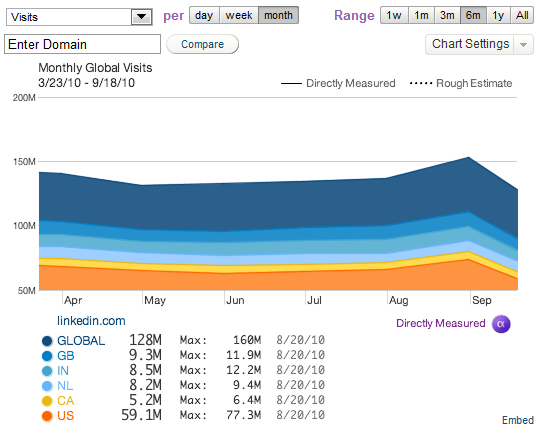 .
.
LinkedIn Monthly Visits Per Person
The most recent data from Quantcast shows that the average number of visits per person to LinkedIn is 2.8 per month, both for U.S. and global visitors.
This is essentially unchanged from September 2010.
2011 Data
2010 Data
LinkedIn Monthly Pageviews Per Person
Quantcast’s latest data from LinkedIn shows that monthly page-views per person has been trending down slightly, from 28 for the U.S. and 29 globally in September 2010 to 25 for the U.S. and 24 globally in September 2011.
2011 Data
2010 Data
LinkedIn Global Traffic Frequency and Business Activity
Quantcast breaks down visitor traffic into three categories:
- Passers By, users who visit a site or interact with media once per month;
- Regulars, those who visit a site or interact with media more than once but less than 30 times per month;
- Addicts, those that interact with a site 30 or more times per month.
2011 Data
2010 Data
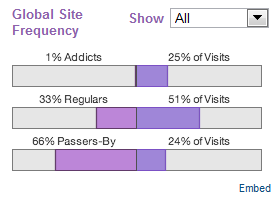
This data shows that 1% of all visitors to LinkedIn are responsible for 25% of all LinkedIn visits, that the 33% classified as “Regulars” account for 51% of all the visits, and that 66% of visitors to LinkedIn visit about once a month.
I have a hunch that the 1% “Addicts” responsible for 25% of all LinkedIn visits are recruiters and HR professionals. What do you think? That’s not bad news for LinkedIn at all, considering how they generate revenue.
With regard to where people tend to access LinkedIn from, over 60% of visitors globally and in the U.S. visit LinkedIn from home rather than from work, and the exact percentages are unchanged in 2011 vs. 2010.
2011 Data
2010 Data
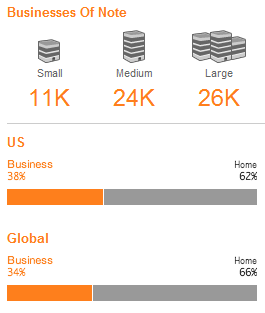
LinkedIn User Demographics
As a professional social networking site, the age, income, and college graduate/post graduate figures are pretty much where most people would expect them to be.
26% of LinkedIn users are aged 18-34, and 70% are aged 35-49 and 50+.
75% of LinkedIn users are college educated, with 27% at the graduate school level. Unsurprisingly, 39% of LinkedIn users make over $100K annually.
For those who have argued that using social networking sites for recruiting purposes may be discriminatory, we can see that the male/female split is very close to 50/50 – and even closer than it was back in September 2010.
However, African Americans and Hispanics seem to be underrepresented on LinkedIn, at least with regard to Internet averages, while Asians are overrepresented based on Internet averages.
2011 Data
2010 Data
LinkedIn Monthly Visitors by Country
This chart shows the latest data (from August) for the top 48 countries by number of LinkedIn visitors monthly by country – not the number of LinkedIn profiles per country.
While the U.K. and India were battling over #2 and #3 globally back in September 2010, the United Kingdom has decidedly taken the lead over India and is solidly #2 in terms of the total number of visitors globally by country.
Brazil more than quadrupled their number of LinkedIn users visiting the site monthly, jumping impressively from #7 globally in 2010 to #4, knocking the Netherlands down to #5.
There is a tight race in the 4.7M to 4.9M monthly visitor range between #4, #5, and #6 – Brazil, Netherlands, and Canada, respectively. The next tier down is the 2.2M to 2.9M group, represented by Spain, Australia, Italy, and France.
2011 Data
2010 Data
Being the curious guy that I am, I decided to see where the lowest number of monthly visitors to LinkedIn come from – see the list below.
I have to admit that I had to look up some of these places to see where they were.
Notice that there are visits to LinkedIn coming from Vatican City (Holy See).
LinkedIn Visitors by City
This chart shows the latest data (from August) for the top 48 cities from which visitors come to LinkedIn.
I am not sure what “Unknown” represents, other than the obvious – do you have an idea?
Some folks in the United States may be surprised to see that the #1 city is (still!) London. That’s right, there are more visitors to LinkedIn from London on a monthly basis than from Mountain View, CA (LinkedIn’s headquarters and downtown Silicon Valley).
Furthermore, out of the top 25 “known” cities, only 9 are from the United States, demonstrating how truly global LinkedIn is.
I am not sure what’s going on with Council Bluffs, IA ranking #7. It’s right outside of Omaha, NE, but still – I would not have guessed they would rank #7, ahead of Toronto, Chicago, Los Angeles, and Delhi. No offense Council Bluffs!
2011 Data
2010 Data
Just for fun, I decided to see what cities had the least number of visitors to LinkedIn.
After a ridiculous amount of clicking (I had to get to page 1,379 and 1,380 of the results), here they are:
LinkedIn U.S. Monthly Visitors By State
Once again, California has the most monthly visitors to LinkedIn by a wide margin – more than double New York, jumping significantly from 3.6M monthly visitors in 2010 to 9.6M in 2011.
If you were curious, Wyoming has the least number of monthly visitors to LinkedIn out of all 50 states.
2011 Data
2010 Data
I hope you found the LinkedIn visitor demographics and data interesting!
If you haven’t already, I recommend you investigate other sites using Quantcast, even if the sites aren’t directly measured. For example – check out Quantcast’s estimated user demographics and visitor statistics for Facebook and Twitter.
Although only estimated data, the information is still quite interesting!
